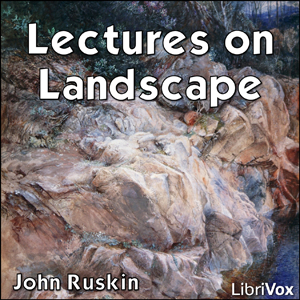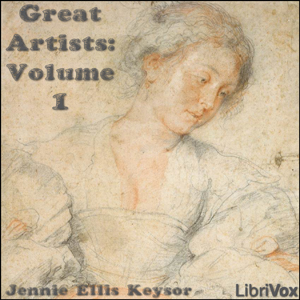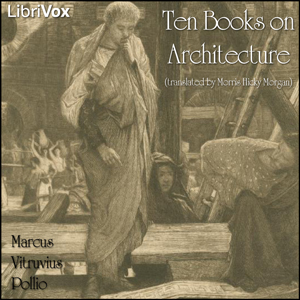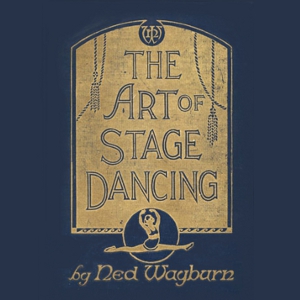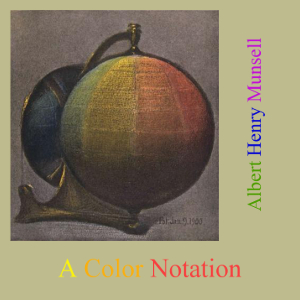A series of lectures on landscape painting delivered at Oxford in 1871, by artist, critic, and social commentator, John Ruskin.
3 episodes
Biographies of Raphael Santi, Murillo, Peter Paul Rubens, and Albrecht Durer. This is a wonderful tool for art study as there are references for further study, as well as ideas for language arts to incorporate into the study. Summary by Laura Caldwell
5 episodes
On Architecture is a treatise on architecture written by the Roman architect Vitruvius and dedicated to his patron, the emperor Caesar Augustus as a guide for building projects. The work is one of the most important sources of modern knowledge of Roman building methods as well as the planning and design of structures, both large (aqueducts, buildings, baths, harbours) and small (machines, measuring devices, instruments). He is also the prime source of the famous story of Archimedes and his bath-time discovery. (Summary from Wikipedia)
39 episodes
Ned Wayburn, a popular and outstanding choreographer of the early 1900's, writes about the different styles and requirements of dancing and his way of teaching it.
55 episodes
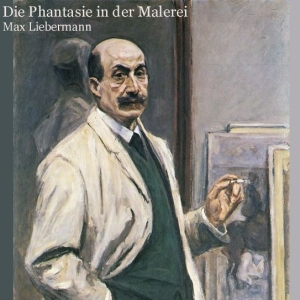
Max Liebermann gehört zu den bedeutendsten Vertretern des deutschen Impressionismus und war Kopf der Berliner Secession.1903 erfolgte eine erste Veröffentlichung als Professor der Akademie der Künste unter dem Titel Die Phantasie in der Malerei. Hierin lehnte er Gebilde, die nicht auf die Anschauung eines Wirklichen zurückgingen, kategorisch ab. Bei der Malerei sei das Sujet im Grunde gleichgültig, es komme auf „die den malerischen Mitteln am meisten adäquate Auffassung der Natur“ an. Damit lehnte er die junge Bewegung der abstrakten Kunst, insbesondere den Expressionismus, entschieden ab. Liebermanns Essay war keine Kampfschrift, es war sein persönliches Plädoyer für den Naturalismus und den Impressionismus. Im April 1916 erschien Liebermanns Essay Die Phantasie in der Malerei erstmals in Buchform. In der hinzugefügten Einleitung schrieb er: „Und waren je die ästhetischen Ansichten verwirrter als heut? Wo ein jüngerer Kunstrichter aus den Schützengräben Flanderns heraus schreibt, daß der Krieg nicht nur für die Existenz Deutschlands, sondern über den Sieg des Expressionismus entscheidet.“(Zusammenfassung aus Wikipedia)
6 episodes
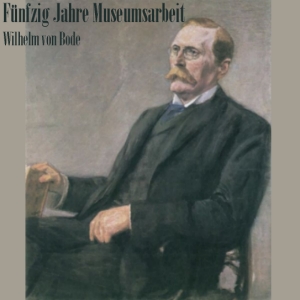
Wilhelm von Bode war ein bedeutender deutscher Kunsthistoriker und Museumsfachmann und gilt als der Mitbegründer des modernen Museumswesens. Bode war eine der zentralen Persönlichkeiten in der deutschen Kultur des späten 19. und frühen 20. Jahrhunderts. 1904 gründete er das Kaiser-Friedrich-Museum (heute Bode-Museum) auf der Museumsinsel in Berlin, war dort Generaldirektor der staatlichen Kunstsammlungen und schuf grundlegende Arbeiten zur Geschichte der deutschen, niederländischen und italienischen Malerei und Plastik. Aufgrund seines entscheidenden Einflusses auf die Entwicklung der Berliner Kunstsammlungen wurde er auch „Museums-Condottiere“ und „Bismarck der Berliner Museen“ genannt. 1889 bis 1914 leitete er ebenfalls die Neugründung der im deutsch-französischen Krieg vernichteten städtischen Kunstsammlungen der Stadt Straßburg.
In seinem Buch Fünfzig Jahre Museumsarbeit gibt Wilhelm von Bode einen Überblick von der Entwicklung der Sammlungen in Zeit 1872 - 1922, soweit er sie erweitert oder selbst ins Leben gerufen hat. Persönliche Erlebnisse hat er dort einfließen lassen, wo sie ihm von allgemeiner Bedeutung erscheinen.
(Zusammenfassung von Wikipedia und Wassermann)
10 episodes
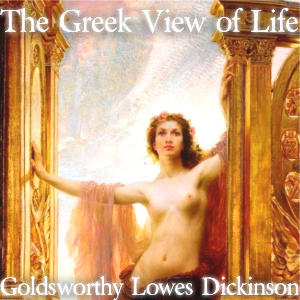
“With the Greek civilisation beauty perished from the world. Never again has it been possible for man to believe that harmony is in fact the truth of all existence.”
This elegantly-written work provides a splendid introduction to the Greeks of the classic period: how they thought, wrote, and organised their lives and loves. Although it dates from the 1890s, there is very little about it that has dated. To its author’s credit, the subject of “Greek love” is dealt with in a sane and factual context - despite the judicial assassination of Oscar Wilde going on in the background.
A Cambridge don much admired by his students (including E. M. Forster), Goldsworthy Lowes Dickinson belonged to the Apostles, a secret society with a strong ethic of male friendship. Alfred Tennyson and his beloved Arthur Hallam were early members. Dickinson is chiefly remembered as a historian and pacifist who played a significant part in the founding of the League of Nations. Inevitably, given his interests and intellectual background, he became a close associate of the Bloomsbury Group.
The Greek View of Life is no dry academic tome. It is a popularizing work in the best sense: accessibly written and illustrated with apt quotations given in sturdy translations, never in the original Greek. It is a joy to read.
(Introduction by Martin Geeson)
52 episodes
"This 1922 book by poet and sometime cultural critic Vachel Lindsay might have been the first to treat the then-new medium of moving pictures as an art form, one that was potentially as rich, complex, mysterious as far older ones, and whose physical and aesthetic properties were only starting to be understood. The highlight of the book might be “The Motion Picture of Fairy Splendor,” which examines the relationship between film storytelling, magic, myths, legends and bedtime stories. It’s discombobulating, in a good way, to read Lindsay’s attempts to grapple with what, precisely, cinema is. Being supposedly sophisticated 21st century people, we all feel as though we know what cinema is, and don’t need to have the basics explained to us, but this is really just vanity and ignorance talking. Bottom line: You haven’t really, seriously thought about movies — what they are, and what they can and cannot do, and become — until you’ve read this book." (Salon.com)
23 episodes
The 7 Wonders of the Ancient World is a list of masterpieces of architecture and art of classical antiquity. First compiled in the second century BC, it served as a guidebook for the interested Hellenic traveller. This small book gives an introduction to all the entries on the list: The Pyramid of Khufu, the Walls of Babylon, the Satue of the Olympian Zeus, the Temple of Diana (or Artemis), the Tomb of King Mausolus, the Colossus of Rhodes, and the Pharos of Alexandria. Sadly for the modern tourist, all but the Pyramid of Giza have been destroyed centuries ago. (Summary by Availle.)
8 episodes
Perhaps the first memoir written by a film celebrity, Pearl White's Just Me gives a first-person account of the actress' rise to stardom. White guides us through her early childhood, her development as a performer, and finally to her breakout role in The Perils of Pauline--a role that made her the most popular "serial queen" of early cinema. Although romanticized and somewhat embellished, this book gives us a fascinating glimpse into the film industry's earliest years and the various myths of film stardom. (Summary by ChuckW)
14 episodes
“Being the Familiar Correspondence of Vincent Van Gogh ... [Van Gogh's] art was appreciated during his life only by a very few and it is but within recent years that it has found admirers who in many cases have been most ardently enthusiastic. Of the following letters, some were addressed to his brother and the remainder to his friend E. Bernard. (Summary from Preface)
17 episodes
Book 3 - The History of the Castle. The focus of the novels is on the events surrounding Henry VIII's replacing Catherine of Aragon with Anne Boleyn as his wife. During Henry's pursuit of Boleyn, the novel describes other couples, including the Earl of Surrey and Lady Elizabeth Fitzgerald, a match Henry does not support. However, some of the individuals oppose Henry and his desires for Boleyn, including Thomas Wyat who wants her for himself and Cardinal Wolsey, who uses a maiden of mysterious birth, Mabel Lyndwood, to lure Henry away from Boleyn. [...] Intertwined with the Court is the story of Herne the Hunter, a spirit of Windsor Forest. He is an evil force that seeks to take the souls of various individuals, and Henry tries to stop him, but is never able to do so. (Summary adapted from Wikipedia)
Other books in the series:
Book 1
Book 2
Book 4
Book 5
Book 6
5 episodes
Sketching from Nature, Equipment, Colour, Composition, Trees, Skies, Grass, Reflections, Distance -- chapters rich with timeless oil painting advice by a master landscape artist, Sir Alfred East. East had an exceptional ability to capture the individuality of trees, the quiver of their leaves against the sky. “If we look at a photograph, the edges of the trees do not give you the feeling that the tree is a living thing, they are marked with hard precision against the light, like a solid building, and yet at the same time if we see them in Nature we hear the whisper of their leaves and know that they live and breathe. To express that is a greater truth than the camera can reveal, and a higher form of realism.” East served as president of the Royal Society of British Artists from 1906 to 1913. - Summary by Sue Anderson
14 episodes
This book is an attempt to teach beginning students how to draw. Starting out with intuition and vision, Harold Speed explains line and mass drawing, and how rhythm is conveyed in art by means of balance and proportion. Everything is pulled together in a chapter on portrait drawing, before the author gives hints on materials and procedure. This manual was written in 1913, but because of the intelligent combination of useful advice and sensitive reflection on the nature and meaning of artistic practice, it has been considered a valuable resource for artists. (Summary by Availle)
23 episodes
This is a compilation of the thoughts on art, science and life of Leonardo da Vinci, translated by Maurice Baring and edited by Lewis Einstein. - Summary by A. Gramour
18 episodes
IIn analysing the Faker one must dissociate him from the common forger; his semi-artistic vocation places him quite apart from the ordinary counterfeiter; he must be studied amid his proper surroundings, and with the correct local colouring, so to speak, and his critic may perchance find some slight modicum of excuse for him. Beside him stand the Imitator, from whom the faker often originates, the tempter who turns the clever imitator into a faker, and the middleman who lures on the unwary collector with plausible tales.
It is not the object of this volume to study the Faker by himself, but to trace his career through the ages in his appropriate surroundings, and compare the methods adopted by him at various periods of history, so far as they may be obtained. (from the Preface)
26 episodes
A lively picture of the origin and completion of the Suez Canal (built between 1859 and 1869) and his architect, Vicomte de Lesseps. This is the translation of a lecture given before the Societe de Gens Lettres in Paris, in April 1870 by de Lesseps himself. (Summary by Availle)
3 episodes
Newton's observations on the optical spectrum were widely accepted but Goethe noticed the difference between the scientific explanation and the phenomena as experienced by the human eye. He did not try to explain this, but rather collected and presented data, conducting experiments on the interplay of light and dark. His work was rejected as 'unscientific' by physicists but his color wheel is still used by artists today. - Summary by Lynne Thompson
42 episodes
A Color Notation is a method developed by A. H. Munsell in order to produce a unified system of color classification. The system identifies three color dimensions hue (color name), value (lightness), and chroma (color purity) and was the first to base the outcome on a scientifically rigorous method of testing humans' color vision. The three dimensions are depicted on a color sphere with pure hue changing around the equator, value changing from light to dark from the north to the south pole, and chroma varying on the inside of the sphere towards the neutral grey of the north-south axis. The Munsell system is still widely used today, for example to define skin and hair colors for forensic pathology, for matching soil colors, or for the selection of shades for dental restorations. (Summary by Availle).
15 episodes
A series of essays by Members of the Arts and Crafts Exhibition Society with a preface by William Morris who writes "It is this conscious cultivation of art and the attempt to interest the public in it which the Arts and Crafts Exhibition Society has set itself to help, by calling special attention to that really most important side of art, the decoration of utilities by furnishing them with genuine artistic finish in place of trade finish." The Arts and Crafts Exhibition Society was formed in London in 1887 to promote the exhibition of decorative arts alongside fine arts. - Summary by J. M. Smallheer
35 episodes
Max Liebermann war einer der bedeutendsten deutschen Maler des Impressionismus. Seine Werke sind noch heute bekannt und geschätzt. Weniger bekannt sind seine Schriften, die in diesem Band gesammelt sind. Max Liebermann war nämlich nicht nur selbst Maler, sondern interessierte sich für alle Aspekte der Kunst, was in diesen 25 kurzen Stücken eindrucksvoll zum Ausdruck kommt. - Summary by Carolin
25 episodes
An example of one of the leading literary magazines of the early 20th Century. Poetry by e.e. cummings and Louise Bryant (aka Mrs. John Reed, of "Reds" fame), a short story by Sherwood Anderson, a memoir of the late poet James Flecker, theater and book reviews by Gilbert Seldes, and other critical works. (Summary by Matt Pierard)
21 episodes

Following the Dissolution of the Monasteries in the time of Henry VIII, a significant part of the buildings of Torre Abbey, particularly the church area, lay in ruins. Then, during the 17th century and subsequently, surviving parts of the abbey were incorporated into the creation of a grand private residence, the owner of which in the early part of the 20th century was Colonel Lucius Cary. With the permission of the colonel, Hugh Watkin, who at that time was living in the Chelston district of Torquay, fairly close to the abbey, undertook certain excavations of the remaining ruins between the years of 1906 and 1911. Until he made his excavations the ruins had not been thoroughly investigated. This book sets forth his findings and conclusions, and is the last of the three editions published, being dated July, 1912. Much more archaeological work has been carried out since the author's day, and further important discoveries made relating to the abbey's history. Torre Abbey passed into the ownership of the local council in 1930. Today, the house, which is now an art gallery and museum, ruins and beautiful gardens are open to the public, and many events, including weddings and exhibitions, take place in the house and grounds every year. It is a Grade 1 listed building. - Summary by Garth Burton
10 episodes
A study of ceramics in the Americas: its form, function and ornamentation as well as its history. Produced by the Smithsonian's Department of Ethnology. Listeners are referred to the text for the illustrations and figures. ( Lynne Thompson)
5 episodes
This work relates the history of the Medici family through three centuries and eleven generations, from its rise from obscurity, to its zenith of power and influence, to its eventual decay and ruin. It outlines their history in conjunction with the major events of Europe and dwells much on the artists and artworks patronized by the Medici - the impetus of the Renaissance. This first volume brings to life the Renaissance and how Florence, through the Medici, was the epicentre of the movement that spread new learning throughout Europe. It describes some of the best and worst of the Medici, including statesmen both good and bad, popes and their intrigues, joyous festivals and tragic assassinations. (Summary by TriciaG)
43 episodes
